Thanks to augmented reality, virtual reality and smart sensors, we’re moving virtual objects with our hands as if they were real. It’s a brave new world of technology-driven reality, and pioneering that future is British tech specialist Inition.
The London-based outfit was founded in 2001 by three computer scientists – Jim Gant, Andy Millns and Stuart Cupit – and has been at the frontier of exploration into the worlds of virtual and augmented reality ever since. By finding, developing and adopting the latest hardware technologies, Inition has a track record of creating new and innovative ways to use VR, 3D printing and more. And that’s why we spent a day in their capable hands…
MERGING OF CULTURES
Combining art, science and tech is the lifeblood of Inition, who’ve researched and developed a plethora of mind-blowing projects. In 2012, they built a wing suit for Nissan (see video below) that let its occupants feel like they were flying thanks to an old-style VR headset, fan, smart support and immersive audio. Inition also attracted headlines in 2014 when working with the BBC to ‘facilitate the world’s first 3D broadcast’, capturing Brian O’Driscoll and Jack Nowell in all their glory at the Six Nations.
More recently, Inition was in the press again for creating a virtual catwalk show where five competition winners could watch London Fashion Week’s main event. They were placed in VR headsets and sat in Topshop’s window to experience the fashion show; at the same time, they became a form of art themselves. Working with the PhilharmoniaOrchestra, Inition also turned the foyer of the Royal Festival Hall into a virtual-reality access point to view and listen to the performance in complete surround – a first for the venue.
2016 is projected as the year that VR will finally gain a foothold, with commentators suggesting the VR and AR markets will be worth around $150-billion by 2020. From what we saw, Inition look set to be at the vanguard of this evolution but, despite the optimism, Inition’s Jay Short warns that manufacturers mustn’t blindly slip into the Emperor’s New Clothes.
“Virtual reality is still in its infancy, and we must be careful or it may never reach the mainstream. Bad content is damaging. That’s why we must create great experiences now so people can see just how amazing the future of virtual and augmented reality can be.”
That’s been Inition’s mission for 15 years from their Shoreditch base, which is a utopian showcase of that tech. Now prepare to have your eyes opened to a different world, a virtual one that’s right here, right now…
INSIDE THE STUDIO
VR WING SUIT
Nissan Juke, wingsuit flying experience. from INITION on Vimeo.
This is the 2012 creation that shot Inition to fame and still leaves everyone that tries it in awe. Nissan commissioned Inition for the project, the Japanese car company coming up with the unusual brief of skydivers attempting to assemble a virtual Nissan Juke while freefalling. And the car giant wanted it finished in just six weeks.
In that timeframe Inition managed to create its own magnetically tracked, head-mounted display, which they rapidly prototyped and 3D printed. Inition’s next task involved building from scratch an ergonomic flight platform to accommodate all shapes and sizes of people, which also reacted to movement, before then installing a DMX-controlled fan. Finally, the team had to calibrate everything to work in conjunction with the bespoke software and the user’s movements. It was an impressive achievement.
Since 2012, the wing-suit experience has been re-skinned and upgraded several times, so when we tried it during our day’s visit, the experience was even more immersive than four years ago. It’s truly amazing how the suit really takes your breath away, cleverly fooling the body into experiencing motion.
PHYSICAL TOUCHSCREEN
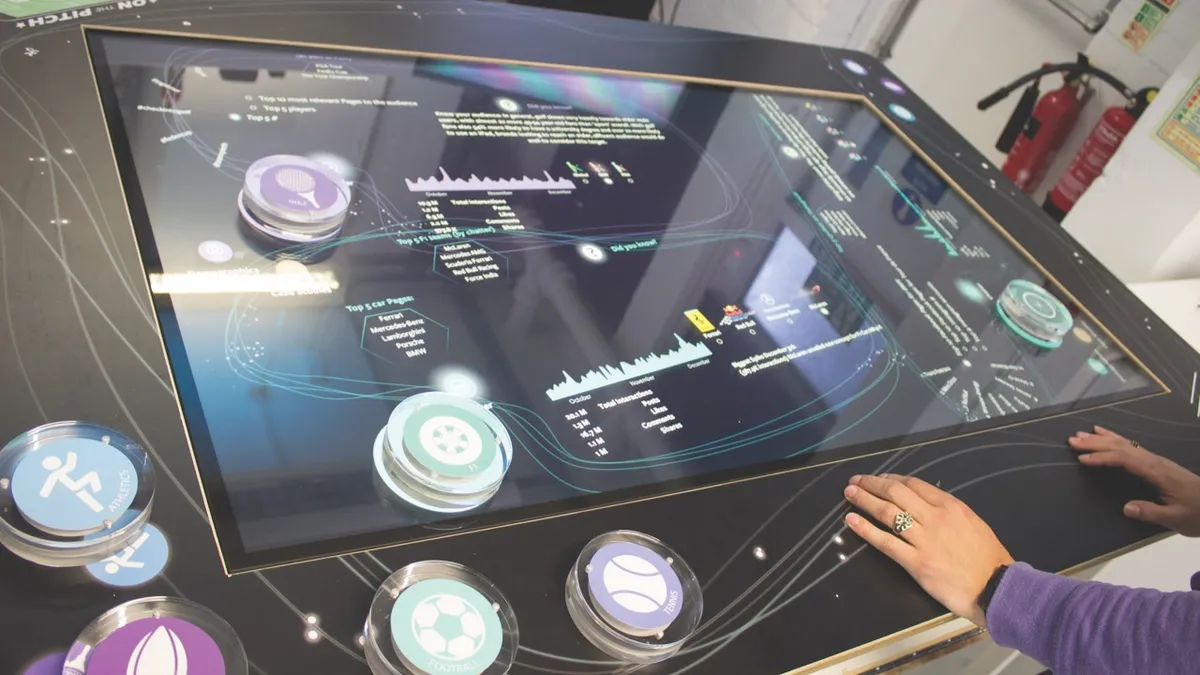
Big data and the trends it can lead to are fascinating and integral to defining the shape and aims of societies. Take the example of health trends, which are an ever-growing resource for spotting and treating illness, be they physical or mental. The problem comes when relaying that information to the public. Pie charts, graphs, table of numbers… these are common platforms used to communicate information, and all are pretty uninspired and dull. That’s where Inition entered the fray, who were tasked with making data interesting and more immersive.
The result? A giant touchscreen-cum-table… but not a touchscreen as we know it because, as Short says, “Normal touchscreens are everywhere and simply don’t excite.” So Inition opted for a collaborative touch interface from Finnish company MultiTaction, which also features infrared sensors. By shining this light up through the display, it’s able to detect objects based on the shapes of markers. In this case, glass pucks that represent a different sport.
Placing these markers on the tables opened up a plethora of data readout options relating to the sport. For instance, twisting and moving the physical puck allowed for stacking and organising. After having a go, we were impressed with how intuitive it is and how addictive, leaving you feeling like Tony Stark. If this were in schools when we were young we’d have aced our exams without the need to revise!
VR HIGH WIRE
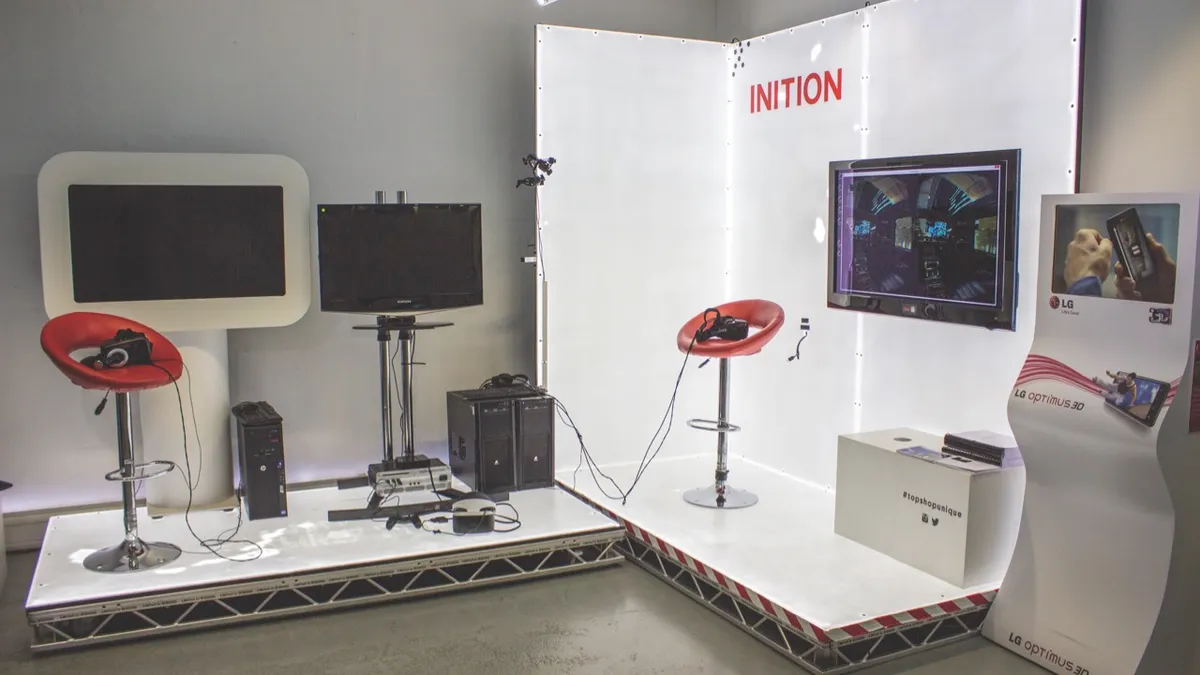
One early Inition VR project took the experience beyond just visual and audio. The team added wind and a physical plank to create a more immersive high wire experience. “Though it sounds a parochial set-up, if you take a step the wrong way your brain perceives that you’re actually nearing the edge,” says Short. “Coupled with a fan for wind, we’ve ended up with people clinging on for dear life. This is what we’re learning – there are so many tricks to create the best VR experience.”
TRANSPARENT SCREEN
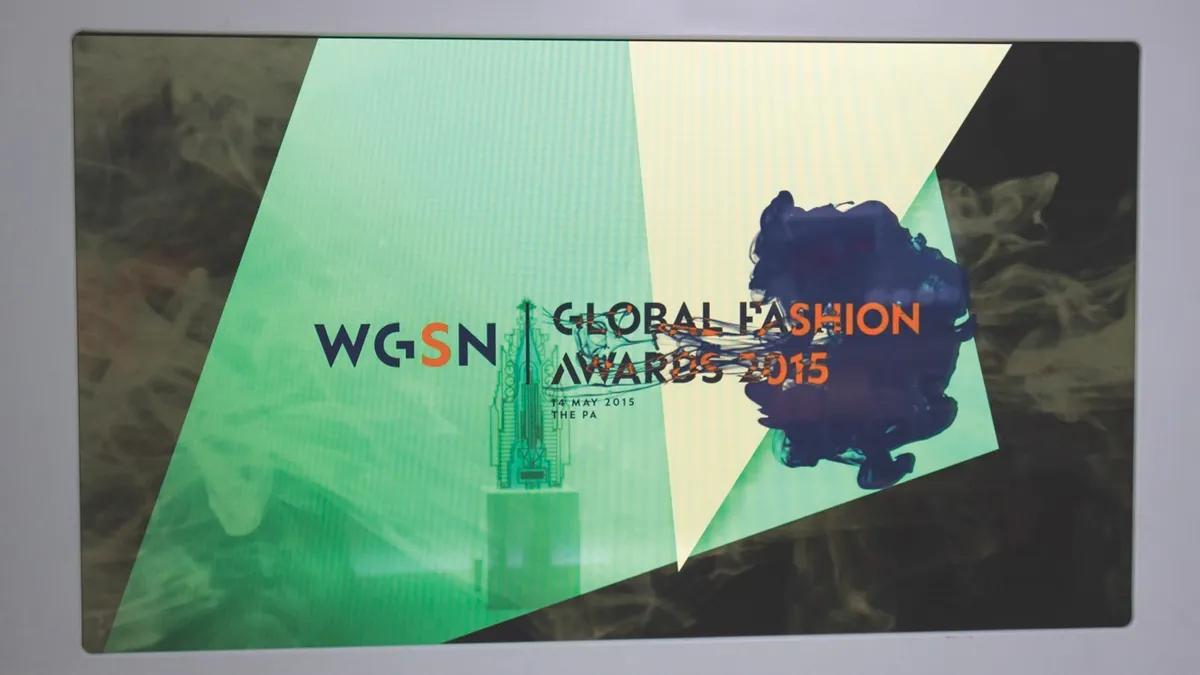
The transparent screen is something that’s starting to appear outside of labs as a means of showcasing products. Inition has used it for just this reason in the past. But what makes it particularly cool is that there are even options for touchscreen interactions with the screen.
The idea is that you can see the product physically – say a pair of trainers – but then graphics make it come to life by overlaying images using the screen in front. The next step could be to let users move the physical object using the touchscreen, presuming said objects were on a linked-up turntable.
The possibilities are endless, and it’s a step towards merging the real and the virtual but without the need for bulky headsets. Still, at nearly £8,000 each and an easily breakable glass front, shops aren’t snapping these up too quickly.
ZSPACE 3D MANIPULATION
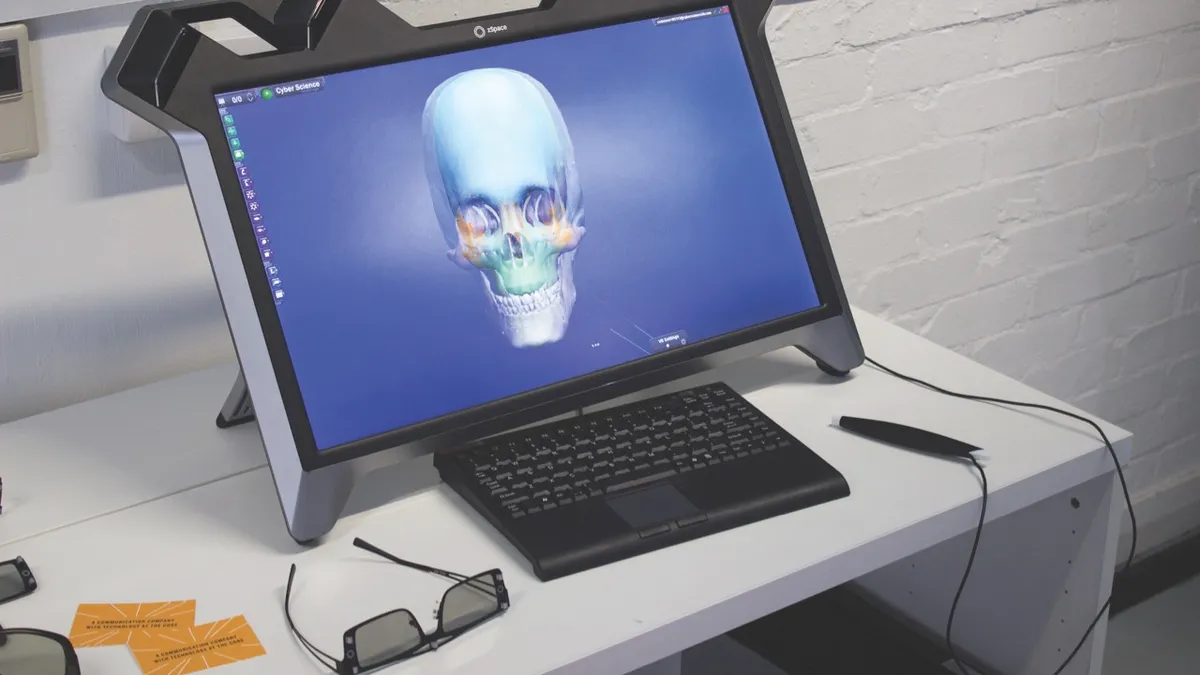
The ZSpace display and interactive pen allow for virtual objects to be manipulated as if they were really there. Using optical trackers and 3D glasses, the screen displays three-dimensional objects that can be looked at from different angles. A stylus acts as a hand, gripping the virtual object so it can be manipulated. The unit is around £2,000 and is often used by universities, where Inition regularly showcase their units and knowledge.
One example Inition showed to onlooking students was of a human skull. The team at Inition demonstrated how doctors and those in training could examine and work with the skull as a way of taking a closer look at a particular injury. From there, they could more accurately prescribe a remedy.
Beyond that it can also be used by graphic designers, 3D modellers and moviemakers to create and manipulate virtual objects as if they were in the real world. This is a first step towards what augmented reality could offer us in the not too distant future.
STEREOSCOPIC 3D DISPLAY

The Inition screen employs layered stereoscopic 3D, meaning sense of depth is created even without glasses. And that offers the potential of opening up the insular nature of VR. It also overcomes the issues of glare and VR technology being hard on the eyes. Stereoscopic 3D allows anyone to use the displays to draw people in, even on the street.
The downside? Stereoscopic 3D screens need to be looked at from just the right position or the screen layers are revealed and the illusion is shattered. You may have already seen this technology used by advertising companies at airports, and you’re very likely see more of them in the future.
3D PRINTED MODELS
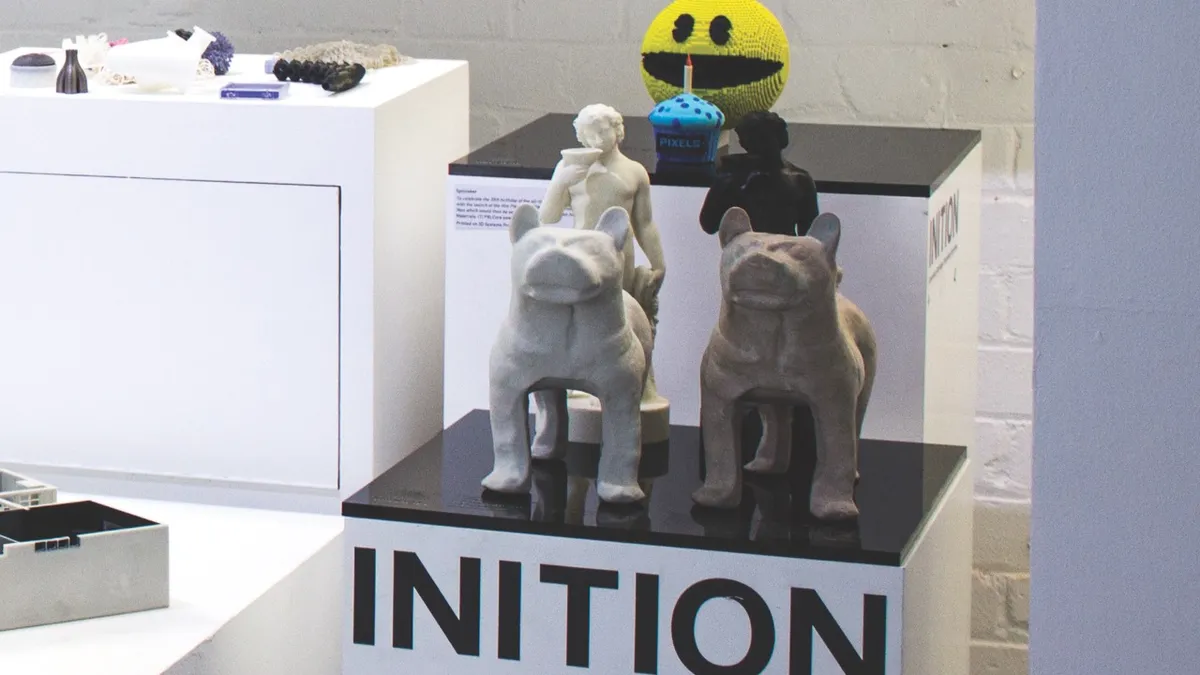
As we’ve shown, Inition has used 3D scanning and 3D printing to create a huge amount of objects, like human skulls for medical students. They were also involved with the team at Top Gear Live, the project involving prototyping a physical object to show off the speed of the technology used.
Another job Inition carried out, this time for Crossrail in London, saw them create a version of the tunnels so that the engineers could actually see at scale what was going to be created. This helped to save money by planning for problems ahead of time. When you consider how affordable 3D printing can be, these savings are even greater.
Inition has even 3D printed moulds that allow museums to create multiple miniature versions of exhibits to be sold affordably. When asked why Inition doesn’t simply charge for making its own, the response was: “We’re not just about money – it’s the passion for technology and finding new ways of using that tech which drives us.”
3D PEN CONTROL
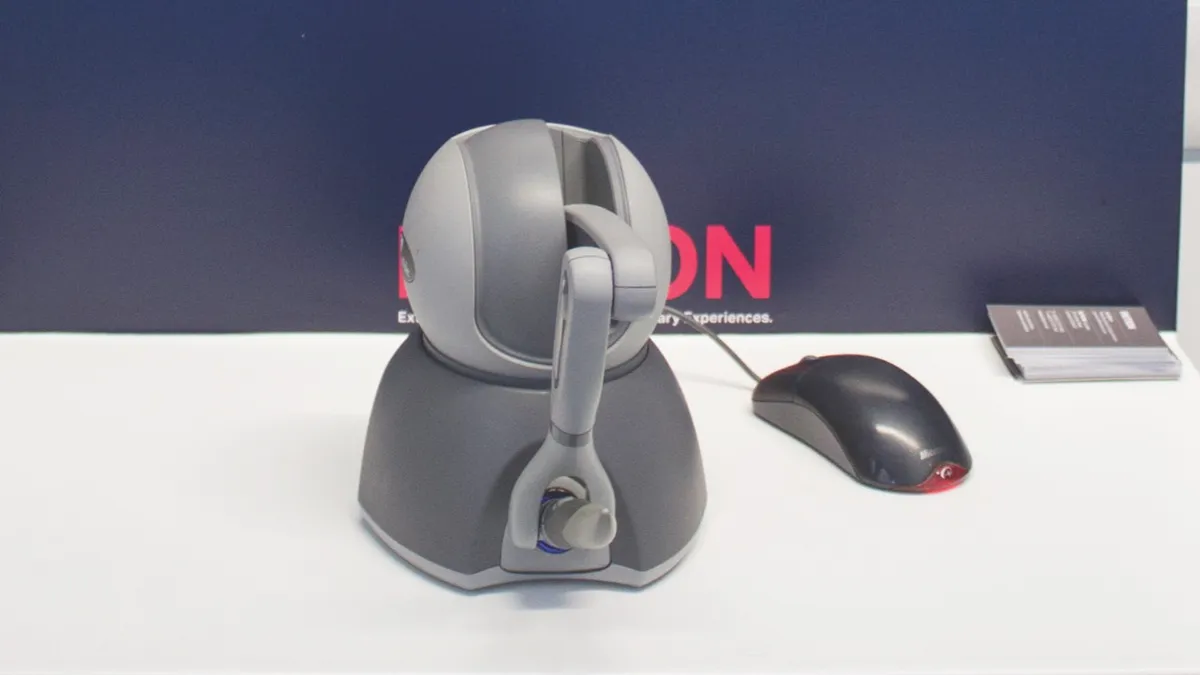
This is essentially a more physical version of the Zspace with the haptic pen suspended by an arm that responds to movement. With your haptic wand, you’re given force feedback so it feels as though you’re really touching the object in the virtual space.
Inition has discovered that it’s proved very popular for the medical professional to manipulate virtual body parts. A combination of haptic feedback and augmented reality could see the future welcome a blend of virtual objects in the real world that actually ‘feels’ like they are there being manipulated.
AUGMENTED REALITY IPAD

Using an iPad, Inition created an intelligent augmented-reality app that responds to movement. The result was a virtual representation of a building project that could be moved around using the tablet, like it was really there. Thanks to extremely high resolution and impressive detail, you can move the tablet closer to effectively zoom in for a close-up of the build.
“Virtual reality is great but it has its limitations. For instance, it can be a very solitary experience,” says Short. “That’s where augmented reality works well. It empowers the user so, rather than a PowerPoint presentation, individuals can take the information in as they please, which actually helps them absorb it far easier.”
The future will see these types of virtual object overlaid on the real world but without the need for a tablet. At tech conferences around the world, much talk has focused on AR headsets for all-day use and even advanced contact-lens screens. Inition are understandably excited about this technology but throw in the caveat that we shouldn’t expect to see it anytime soon. The closest we have is Microsoft HoloLens but even that’s developing slowly.
Follow Science Focus onTwitter,Facebook, Instagramand Flipboard
